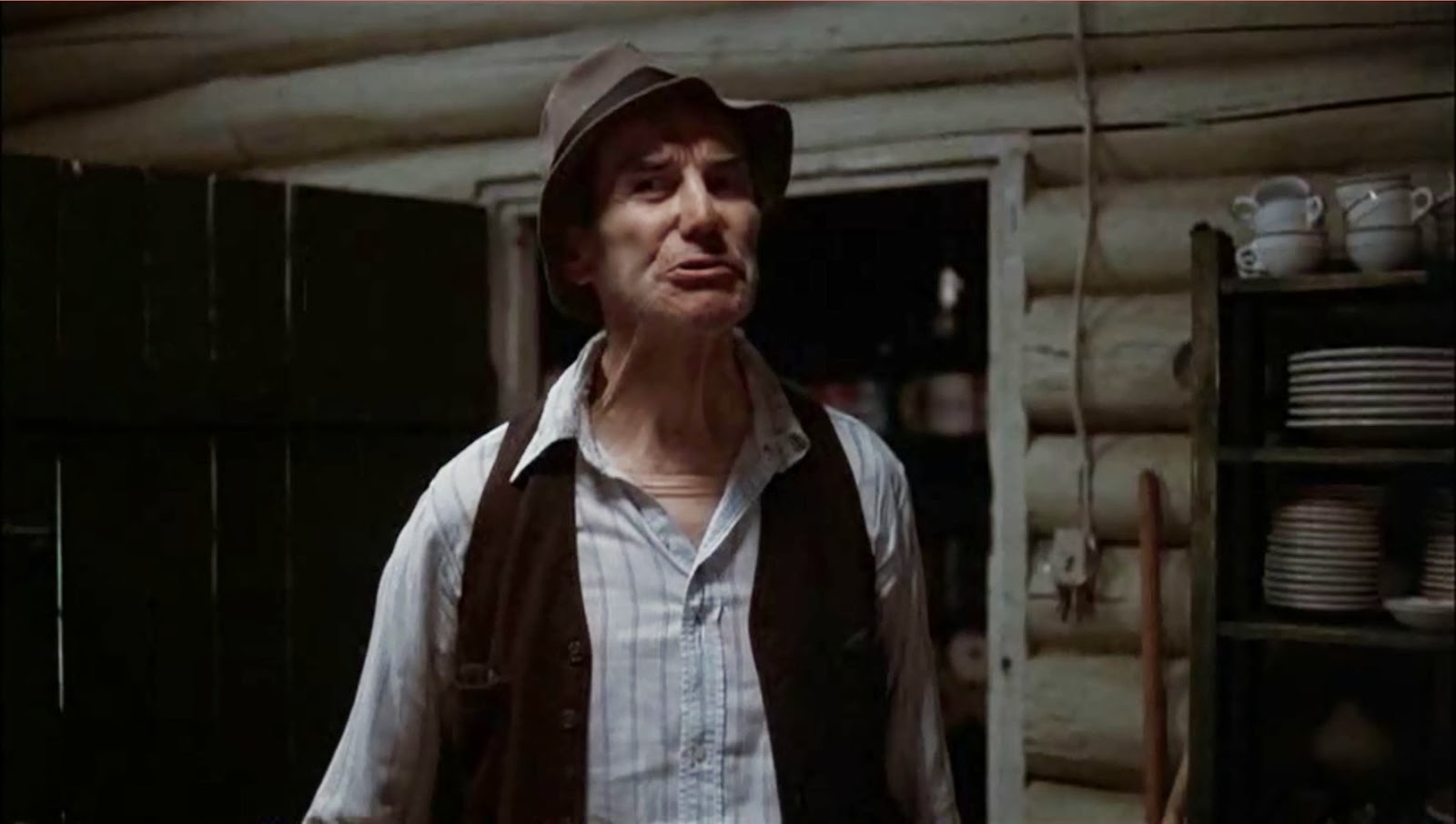Films have formulas and rules, but how well do films follow those formulas? Why do the Slasher Film rules exist?
I looked at 10 rules the Slasher Film genre followed, tested 20 films against them and analysed the results, but I never looked at the rules themselves, so let's look at the first Slasher Film rule...
RULE #1
A Warning Will Come From…
While parents/the authorities may seem a good source of information in horror films they are generally unreliable. As such what seems like the worst sources for information are, ironically the best. This is for 2 reasons: The stories are true (no matter how crazy) and animals, children and the mentally absent have a special sense about these things. Local Legends, The Elderly, The Insane, The Mentally Handicapped, Children, Animals, The Stoned, Newspaper clippings, Radio & TV Broadcasts and Any Other Source Easily Dismissed. The warnings will often come in combined form: a Doomsayer, a crazy old man spouting local legends.
(This is the second version of the rule, not the first.)
The warning is required for 4 reasons:
- Genre
- Tension
- Fault
- Exposition
Genre
The reason that films have rules and cliches is so people know what they're getting. That goes without saying and is a little bit circular. Following the rules also establishes the genre for the viewer. If someone is watching a film without know its genre, then a warning near the beginning will tell people it's a horror film not a rom com or a road film.
Tension
The warning creates tension. It puts the viewer - and some of the potential victims - on edge, which, of course, a horror film needs. There are certainly other ways to do this. If the plot allows it, a death or two early on will do it. A good director will be able to do it in other ways. But a quick and simple method is the prophecy of impending doom. As well as creating tension directly for the viewer, the fear of the potential victims adds to the fear of the audience.
Fault
The death of the victims has to be their own fault. Part of that is the whole punishment-for-transgression thing (Rule 3) but by ignoring the warning, they are responsible for their own deaths and endangerment. After all, they were warned.
The fault is weak at best. Believing the rants of crazy old men is hardly something to base your actions on, but it's enough for the audience. Skeptical audiences who don't believe in the supernatural will scoff at the stupidity of characters who ignore warnings of the supernatural. However, it's a deal we make with the creators when we watch the film.
Exposition
A critical flaw in many slasher films is that the isolation and deaths make an explanation of what's going on hard to supply. A warning can work in information that helps explain what's going on.
In Friday the 13th (1980) the townsfolk (and Crazy Ralph) warn of "Camp Blood" and it's history, the drowned boy and murders years earlier, the tainted water supply and fire. Of course, it is later revealed that Jason's drowning caused Pamela to get revenge by doing the other things. The background to the story is hidden in the curse.
The warning, however, is a problematic place for exposition because of its unreliable nature. Friday the 13th Part 2 features a campfire ghost story, which, without any real source to create it accurately predicts Jason's rampage before it even happens.
Avoiding the Warning
The crazy old man is the obvious warning, but noted there are many other ways of doing it. And, in fact, it is hard not to have one in the film. Even if you strip away the local rumours, children's nursery rhymes and old news clippings, you're left with the film itself. The first tension moment, the first death, any weirdness or exposition all of these things act as a warning. Some may die before they get one, but it's difficult to maintain suspense without it.
There's no real warning at the beginning of Wolf Creek. Just the disturbing music over the shots of the outback, which has an unsettling feeling. However, once the characters are already in the presences of the killer, his conversations contain hidden warnings. Even with the characters oblivious the audience has seen the warnings, know they're there and feel the tension they create.
~ DUG.









No comments:
Post a Comment